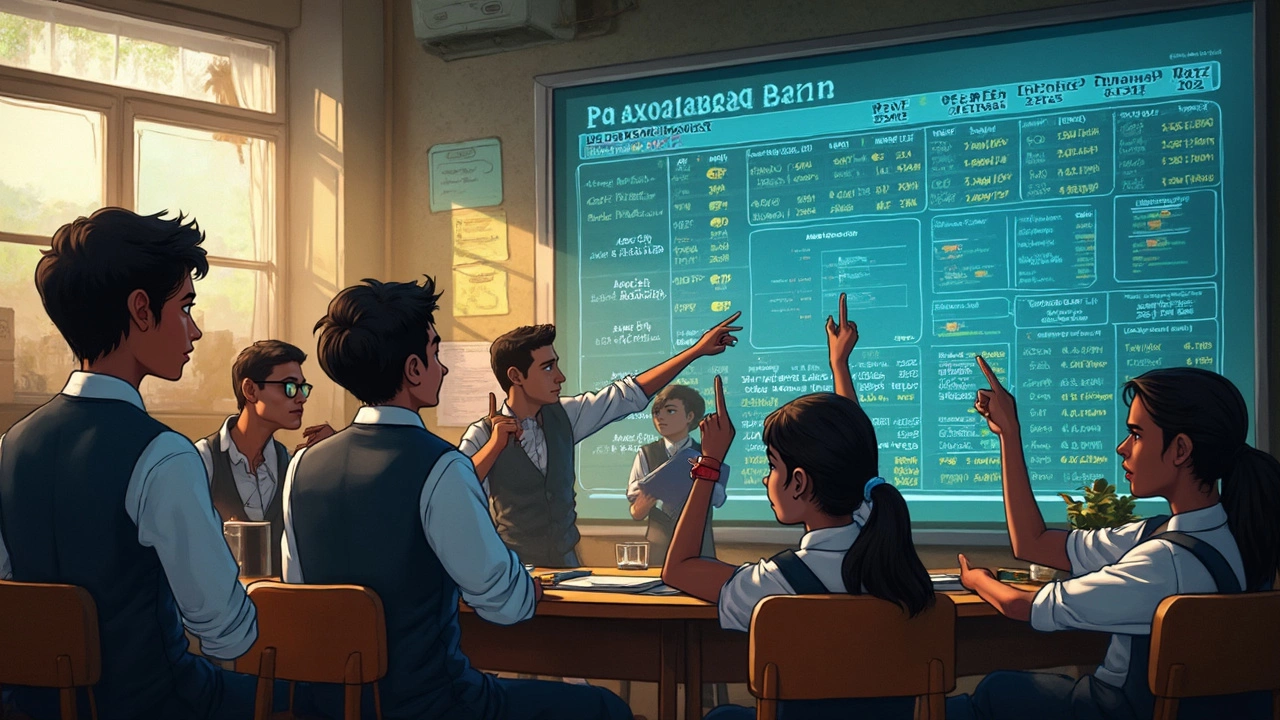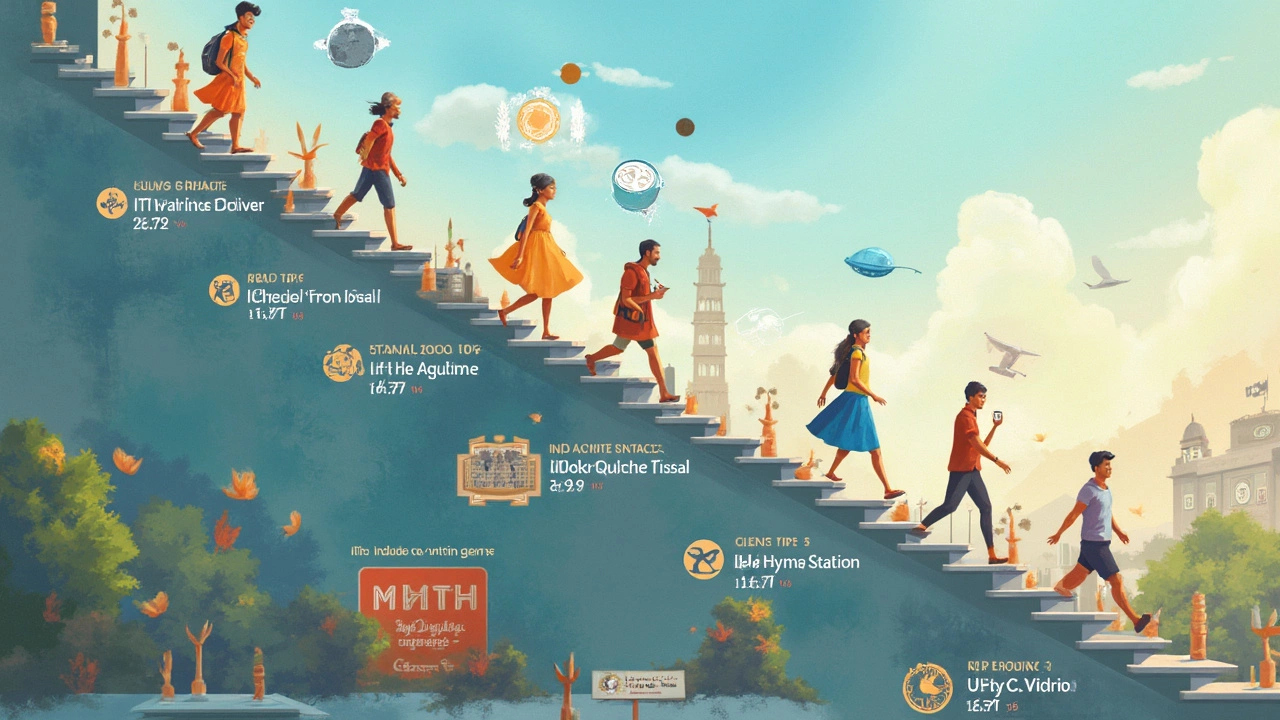
The question floats around every year—just how many seats do IITs in India actually have? If you're aiming for a B.Tech seat, here's the no-nonsense answer for 2025: across 23 IITs, there are roughly 18,000 undergraduate seats up for grabs through JEE Advanced. That number makes even the boldest student pause, right? It's smaller than you'd imagine, considering how much hype IITs get.
The real catch isn't only the total number, but how those seats get split—by branch, campus, and category. For every Computer Science spot in Bombay or Delhi, there are far more hopefuls than actual seats. The competition is fierce, so it pays to play smart instead of falling for rumors or WhatsApp ‘predictions’.
This breakdown isn't just for data nerds. Knowing the actual seat count by college and branch helps you set practical goals, shortlist the right IITs, and avoid disappointment. If you’re planning to list your preferences or figuring out your ‘dream’ versus ‘safe’ branches, this seat data is your map. Grab it, and you’re no longer guessing—you’re planning with facts in hand.
- Seat Count: The Big Number
- How Seats Are Divided
- Effect of Branches and Campuses
- OBC, SC, ST & Other Categories: What Changes?
- Practical Tips for Beating the Numbers
Seat Count: The Big Number
Everyone hears about the crazy competition, but let's talk real numbers. For 2025, there are around 18,000 IIT seats up for grabs for B.Tech courses through JEE Advanced. That's all 23 IITs together, adding up every branch at every campus.
Not all IITs are the same size. IIT Bombay and IIT Delhi have more seats, while the newer IITs—like IIT Jammu or IIT Goa—start with fewer. It’s smart to know exactly where the seats are, not just the total.
Here’s a quick look at how many undergraduate (B.Tech) seats each major IIT is offering in 2025:
| IIT | Approx. Number of Seats (2025) |
|---|---|
| IIT Bombay | 1,360 |
| IIT Delhi | 1,200 |
| IIT Kharagpur | 1,860 |
| IIT Kanpur | 1,200 |
| IIT Madras | 1,150 |
| IIT Roorkee | 1,350 |
| IIT BHU | 1,300 |
| IIT Hyderabad | 570 |
| IIT Indore | 360 |
| IIT Gandhinagar | 290 |
| IIT Ropar | 320 |
| IIT Jodhpur | 490 |
| IIT Mandi | 340 |
| IIT Patna | 425 |
| IIT Bhubaneswar | 425 |
| IIT Guwahati | 925 |
| Other/newer IITs | ~2,000 (combined) |
If you sum these up, it lands you just about at the 18,000 mark. Remember, this count can change a bit every year as IITs add or tweak courses, but for 2025, this is what you’re staring at.
- Biggest IITs have the bulk of the seats: Kharagpur, Bombay, Delhi, Kanpur, Madras, and Roorkee always rank at the top for intake.
- New IITs are growing: Each year, there’s a small bump in seats in places like IIT Palakkad, Dharwad, and Tirupati. Don’t overlook them—they’re easier to get into compared to the old giants.
- All seats aren’t the same: Different branches have different counts. Computer Science gobbles attention but has fewer seats per campus.
The main takeaway? You’re not just applying for one of many IIT seats; you’re actually aiming for one of a few hundred (or sometimes even less) in your favorite branch at your target campus. More reason to map out second and third choices when it comes time for counseling.
How Seats Are Divided
That top-line seat count you always hear about? It's not as straightforward as you think. Those 18,000-ish seats in the IITs are split in some pretty specific ways. The main breakup is by category, branch, and gender. Here’s how it actually works:
- IIT seats are first divided by academic program (branch)—so, Computer Science, Mechanical, Civil, Electrical, etc. Each IIT decides how many students to take in each program, and the numbers can be wildly different. For example, Computer Science in IIT Bombay might have fewer than 120 seats, while Mechanical in another IIT might have 180+.
- Then comes reservation. Seats are split based on India’s reservation policy: General (Open), OBC-NCL (27%), SC (15%), ST (7.5%), EWS (10%), and Persons with Disabilities (PwD in each category).
- Since 2021, there's a “supernumerary” batch, which means extra seats for female candidates—about 20% of seats in each branch are set aside for women, over and above the usual breakup. This helps maintain a better gender ratio.
Teens prepping for JEE often ignore this fine print, but it’s actually crucial. If you’re a female candidate, or eligible for any reservation, your pool is smaller (and so sometimes your cutoff is lower). But for open seats, the competition is super tight.
| Category | Percentage of Seats |
|---|---|
| Open (General) | ~40% |
| OBC-NCL | 27% |
| SC | 15% |
| ST | 7.5% |
| EWS (Within General) | 10% |
| PWD (All categories) | 5% supernumerary |
| Female Supernumerary | ~20% additional |
Sounds confusing? A quick hack: always check the official JoSAA seat matrix when filling out choices—it shows the breakdown for every branch, every IIT, every year. Don't fall into the trap of thinking '18,000 seats' means you can apply for any of them. Your options depend on your category, gender, and the branch you want. So, always dig into your actual slot count before making your plan.

Effect of Branches and Campuses
If you've ever chatted with senior IIT aspirants, you've probably heard stories about crazy competition for certain branches, especially Computer Science. Not all IIT seats are equal—your odds depend a lot on the branch and campus you choose. A spot in Electrical Engineering at IIT Kanpur isn’t the same as a seat in Metallurgical Engineering at IIT Bhubaneswar. The numbers make it clear.
Some branches—think Computer Science, Electrical, and Mechanical—are super popular, grabbing the top rankers every year. Campuses like IIT Bombay, Delhi, and Madras are always in high demand. If you want Computer Science at IIT Bombay, for example, last year you needed a top-70 All India Rank. No joke.
| Branch | IIT Campus | Closing Rank (2024, Gen. Category) |
|---|---|---|
| Computer Science | IIT Bombay | 67 |
| Electrical Engineering | IIT Delhi | 575 |
| Mechanical Engineering | IIT Madras | 2248 |
| Civil Engineering | IIT Roorkee | 6376 |
| Metallurgical Engineering | IIT BHU Varanasi | 12734 |
The number of seats in each branch isn't the same either. Big branches like Mechanical or Civil usually have more seats, sometimes around 100 or more per campus, while niche branches might offer just 30–40 spots. Newer IITs generally have fewer seats and get lower closing ranks for the same branches. That’s why someone with a mid-level rank may land Computer Science at IIT Jammu, but not at IIT Delhi.
The big takeaway? Be flexible about branches and campuses. If your main goal is getting into any IIT, check out less-hyped branches or newer campuses. Sometimes those branches come with bigger seat counts and less cut-throat competition. Plus, IITs keep adding new branches like Data Science and AI, so fresh options pop up most years—another thing to keep in mind when locking your choices.
OBC, SC, ST & Other Categories: What Changes?
Let’s get straight to it: not every IIT seat goes to the general category. Thanks to the reservation system, seats are spread out based on government-mandated quotas, seriously changing your odds at each IIT and branch. Knowing exactly how these splits work is huge—sometimes, it even determines which IIT you should target.
Here’s the basic seat reservation breakdown as set for 2025 admissions:
- 27% of seats reserved for OBC-NCL (Other Backward Classes – Non-Creamy Layer)
- 15% for SC (Scheduled Castes)
- 7.5% for ST (Scheduled Tribes)
- 10% for EWS (Economically Weaker Section, not covered under OBC)
- And the rest for General Category
If you have a valid certificate for any of these categories, you’ll be considered under that group’s cut-off marks (which, truthfully, are much lower than the General ones in almost every branch and campus). For example, at top IITs, the closing rank for Computer Science in the General category can be under 450, while for OBC it’s closer to 1,000, and even higher for SC/ST.
This gets more interesting if you take a look at the rough seat numbers. Here’s a quick view by category for all IITs combined in 2025 (rounded off):
| Category | Approximate Seats |
|---|---|
| General | 7,200 |
| OBC-NCL | 4,860 |
| SC | 2,700 |
| ST | 1,350 |
| EWS | 1,800 |
One more detail: almost every IIT also has a 5% horizontal reservation for Persons with Disabilities (PwD) in each category. So, out of those seats, 5% are set aside for students with certified disabilities—OBC-PwD, SC-PwD, and so on.
If you’re aiming for IIT seats and have a reservation, you can shortlist branches or campuses with closing ranks in your range. Don’t forget to double-check your documents and category status before counseling starts. More than one student has missed out on their seat just because they messed up their paperwork.

Practical Tips for Beating the Numbers
If you’re serious about grabbing one of those coveted IIT seats, it’s not just about being a topper. You need a strategy—because every little advantage helps. I’ve listed a few solid ways you can increase your chances, whether you’re aiming for Computer Science at a top IIT or open to exploring new branches and campuses.
- Know the Cut-off Trends: Every year, top branches in places like IIT Bombay and IIT Delhi close at crazy low All India Ranks—sometimes below 100. But branches like Metallurgy or Mining at newer IITs may go till 9000+ in JEE Advanced. Get last year’s opening and closing ranks (they’re published officially) and see where you realistically stand.
- Play the Category Card Smartly: If you have OBC, SC, ST, or EWS category status, learn exactly how many seats are reserved for you in each IIT and branch. Sometimes just knowing these numbers helps people find opportunities others miss.
- List More Preferences: During counseling, don't just fill 10 choices. The system lets you fill up to 300. Use them. Alisha and I sat with Rhea and filled in as many as possible, including a mix of top dreams, realistic picks, and branches you can live with.
- Don’t Obsess Over Old IITs: Sure, older IITs sound more prestigious, but new IITs have good faculty and placements are catching up. Check placement stats—did you know IIT Tirupati had 80% placement for its first B.Tech batch in 2023? Sometimes a new campus is your golden ticket.
- Keep Backup Options Ready: Fill for B.Tech in less popular branches, dual degrees, or integrated masters if your rank is borderline. Many switch branches in the second year if they score high CGPA.
If you like stats, here’s a peek at how seats are scattered across IITs in 2024 (for Open/General category):
| IIT | Total UG Seats | CS Branch Seats | Last Year CS Cutoff (AIR) |
|---|---|---|---|
| Bombay | 1360 | 124 | 67 |
| Delhi | 1209 | 120 | 116 |
| Kharagpur | 1869 | 138 | 279 |
| Mandi | 330 | 54 | 2739 |
| Tirupati | 215 | 38 | 5738 |
Keep one thing in mind—every seat counts, and every change in rank changes your options. My last tip? Start early with your seat-mapping game, check the official seat matrix on the JoSAA website just before counseling, and talk with seniors or teachers who know the process inside out.
More Articles

Teach Yourself to Code - Is It Really Possible?
Discover a realistic step‑by‑step roadmap for self‑teaching coding, choose the right language, use free platforms, overcome obstacles, and build a portfolio to land a job.


